macro audio. The manufacturer, known in hi-fi circles primarily for its high-quality power cables and audiophile power strips (Web: https://makroaudio.de/) has also been trying out its own headphone amplifier for two years. The still quite young company was founded in 2007 by electrical engineer Eugen Gurskij. Until 2016 he traded in audio electronics from various manufacturers and made his own kits for do-it-yourself projects. The headphone amplifier, baptized with the evocative name “Steinberg” and handcrafted in Germany, arose from Gurskij’s desire to develop a perfect playing partner for his passion for headphones. On the following pages you can read about what his debut work, which, as tested here, is also available with a quite powerful DAC option (price with DAC: 995 euros), can do.
Optics & handling
The amplifier-DAC combination – the Makroaudio Steinberg is also available as a pure headphone amp for 795 euros – is kept simple, but of very high quality. The housing cover and base are made of aluminium, the front and side parts are made of one piece of high-quality acrylic with a piano finish finish. There aren’t many controls on the Steinberg: in addition to the prominent metal volume control, you can only see a status LED and the unbalanced Neutrik headphone output with a 6.3 mm jack . There is no balanced XLR output or an input switch.
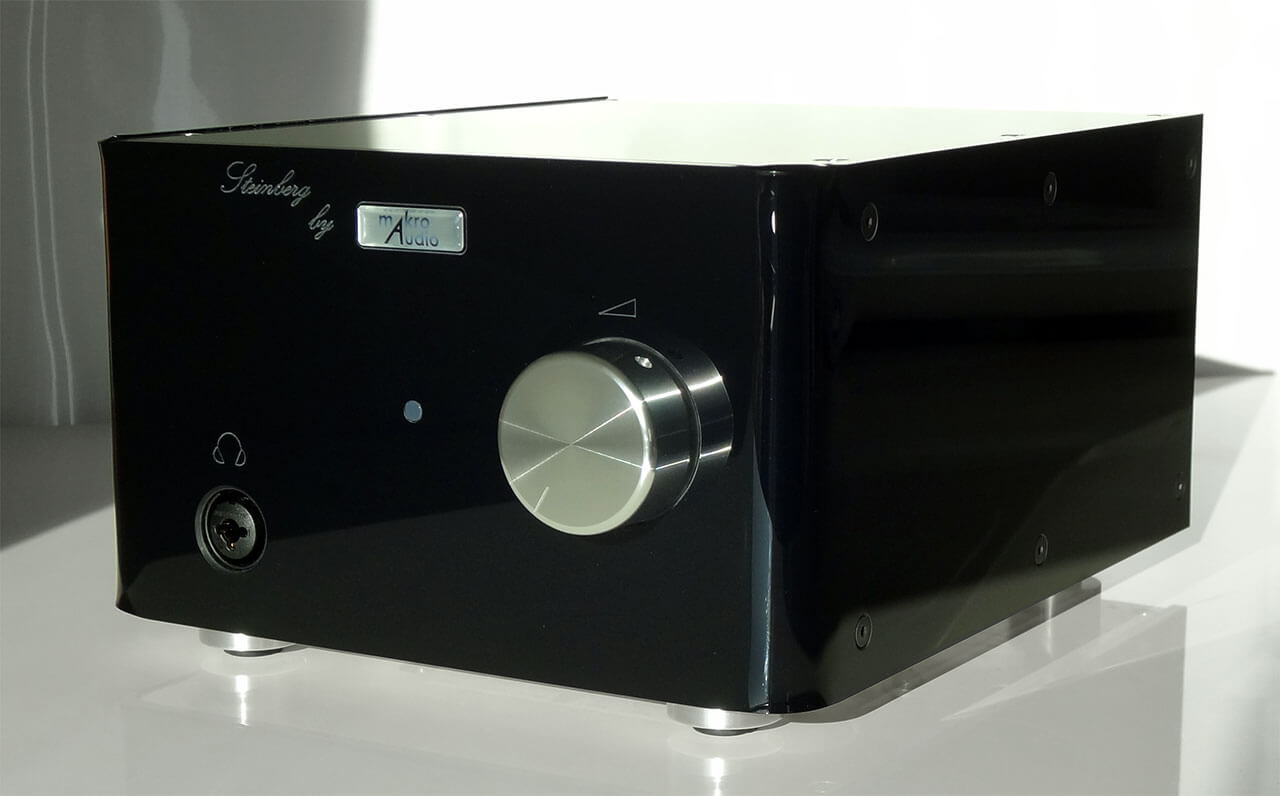
On the connection side, the chic desktop amplifier comes with a double cinch for analog inputs and outputs and three digital inputs (USB-B, Toslink and S/PDIF coaxial). Mr. Gurskij explains the lack of an input selector switch by saying that the Steinberg was primarily developed as a headphone amplifier and is not intended to replace a full-fledged DAC. In order to still be able to offer the three most common digital connections, Makroaudio opted for automatic input recognition. This makes the situation a bit more cumbersome when both an analogue and a digital signal are connected to the macro audio. Here the circuit design always favors the digital source – and so you have to pull the USB cable if you want to “switch” to the analog input.
Incidentally, the power connection comes with a “hard” power switch, so that the amplifier can be completely cut off from the power supply. Quite welcome, but the switch is on the back of the device. You have to do without a standby button on the Steinberg.
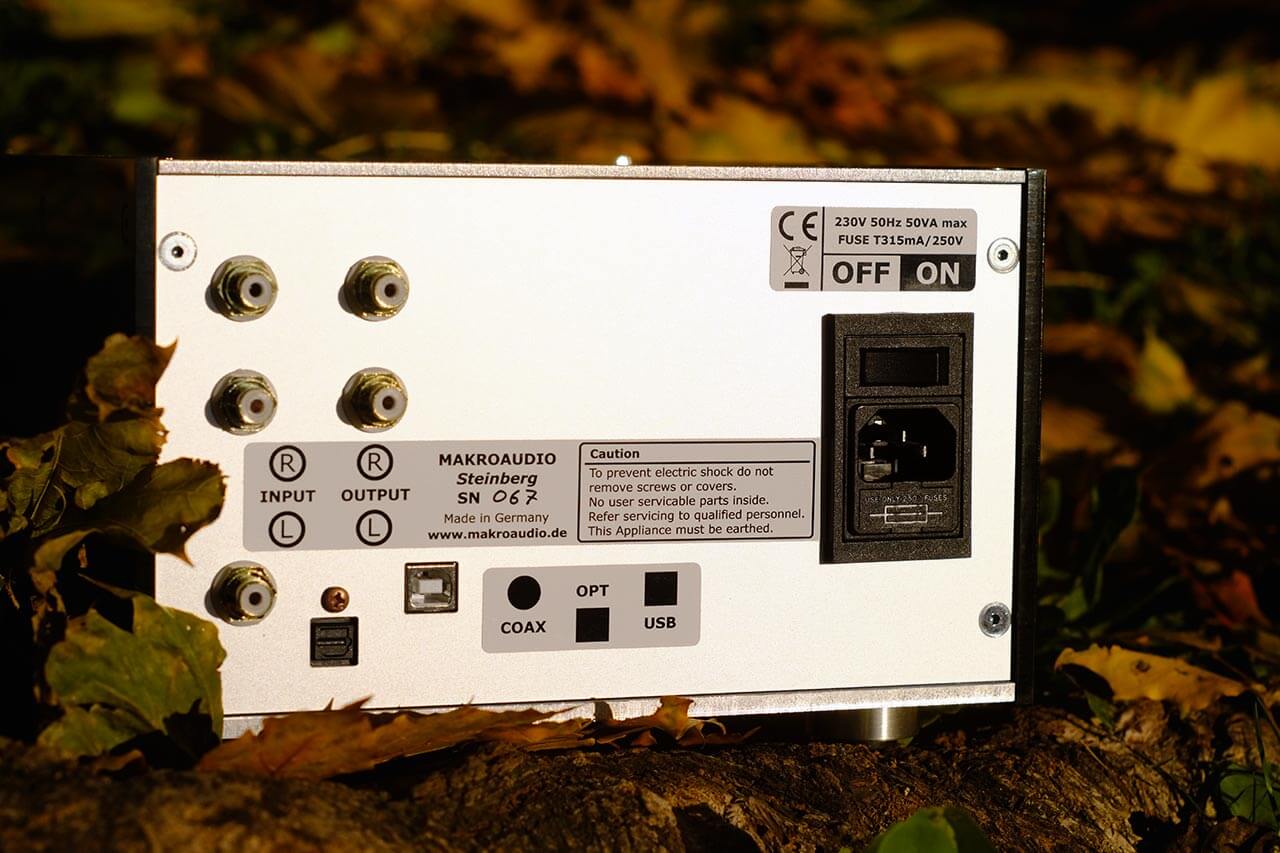
Inner values
Now the question arises as to whether the minimalist, modern design on the outside will also be continued on the inside. I can give the all-clear here right away. The circuitry of the macro audio amplifier is very well thought out, starting with the massive toroidal transformer, which ensures the necessary power supply, shielded from the rest of the circuitry, through the DAC board designed in-house, to the completely discrete amplifier stage for headphones. The toroidal transformer , cast for vibration damping and additional shielding , has a power consumption of 50 VA and, together with the high-quality electrolytic capacitors from Nichicon’s LLS series, ensures a linear direct current flow with low residual ripple.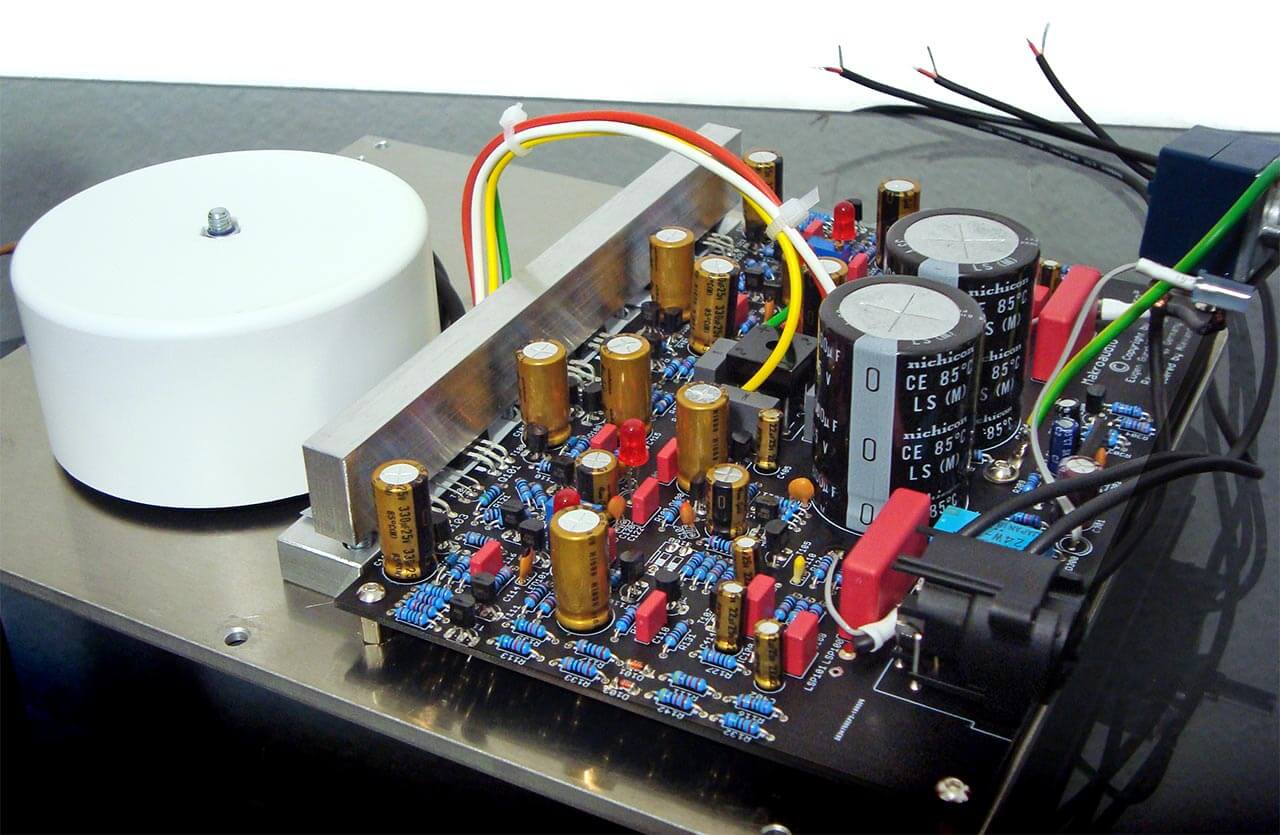
The heart of the DAC section, which can be optionally selected when ordering, is the Saber chip ES9038Q2M from ESS Technologies. Sampling rates of up to 768 kHz and 32-bit PCM (maximum 192 kHz via Toslink and S/PDIF coaxial) are accepted via the USB-B input . Also DSD filesThe D/A converter accepts up to DSD512. There are probably two reasons why Makroaudio did not rely on the high-end model from ESS, the ES9038 Pro. On the one hand, the Q2M version, which is optimized for mobile operation, is a little cheaper to buy – the price for the DAC option can be kept as low as possible. On the other hand, Gurskij told me that a fully-fledged high-end DAC is being planned, which will be offered separately in the future. The solution integrated in the Steinberg should also be of very high quality.
An XMOS audio controller that minimizes unwanted jitter is responsible for the asynchronous transmission at the USB input. Mac OS and Linux operating systems do not require any additional drivers for control, for Windows systems a special Thesycon stereo USB audio driver is required for data rates over 384 kHz/24 bit (Windows 10), which can be downloaded from the manufacturer’s website .
As mentioned at the beginning, the amplifier circuit of the Makroaudio Steinberg manages without integrated operational amplifiers in the signal path. With his headphone amplifier, Eugen Gurskij takes a similar approach to that of the Australians from Burson Audio and uses a completely discrete circuit design with audiophile components such as Wima MPK4 film capacitors or the ALPS RK27 potentiometer for precise volume control and maximum channel synchronization, instead of the usual ICs small pot position. This is ensured, among other things, by the massive volume control turned from aluminium.
The amplification factor can be adjusted in three stages (6, 14 and 22 dB) on the underside of the device using the mouse keyboard. The amplification for the right and left channel can be selected separately. The Steinberg can conjure up up to 2.6 watts into 32 ohms from the headphone output if required. The output impedance is very low at 0.15 ohms. The Makroaudio Steinberg should therefore offer a good sound experience both with highly sensitive in-ears and with power-hungry magnetostats.
Makroaudio Steinberg: sound impression and comparisons
I mainly fed the Makroaudio Steinberg with data via the USB input, since the integrated DAC option turned out to be the most potent solution in terms of sound among my digital-to-analog converters. Both the benchmark DAC 1 USB and my more compact DACs from FiiO couldn’t hold a candle to the integrated ESS-DAC.
The amplifier also received analogue signals from the Pro-Ject Phono-Pre. Like the digital interfaces, the analog input can be described as extremely low-noise. No surprise considering the Steinberg was designed primarily as a headphone amp. With a high-quality external D/A converter, the performance can definitely be increased compared to the integrated solution.
Treble, resolution & fine dynamics
How does the rather high design effort affect the sound behavior? The first bars of Brad Mehldau’s “Unrequited” from the 1998 album Songs: The Art of the Trio, Volume Three attest to the macro audio’s excellent sonic properties in the treble. The hi-hat and cymbal hits at the beginning of the piece are reproduced in great detail and authentically. It is neither too bulky, as some converter-amplifier designs with Saber DACs do, nor does it “hide” the highs.
Especially in a direct comparison to the Burson Soloist SL MK2 , which is also discreetly constructed and slightly cheaper (about 600 euros), and which is not equipped with digital inputs, the super treble that feels further up is noticeable. The Australian amplifier concentrates more on the middle to lower high frequency range and is a bit more reserved in the upper frequency range than the Makroaudio Steinberg. Even with headphones that play brighter, such as the DT880 Pro (259 euros) from Beyerdynamic, thanks to the Steinberg’s high-resolution brilliance range, you don’t have to be afraid of playing too strenuously. The long-term suitability is not clouded.
The two other comparison devices, the somewhat outdated benchmark DAC1 USB (990 euros) and the Nuprime HPA-9 (745 euros), leave the Makroaudio Steinberg far behind in terms of precision and airy playing style. Above all, the decay behavior on the Steinberg is much more accurate than on the two competitors. With both the Nuprime and the benchmark, the aftertaste of the hi-hats stops much earlier at the same level. The overtones of the piano and the double bass are also worked out very naturally.
In the lowest control range, the Steinberg has small advantages over the Burson Soloist in terms of fine dynamics, not least because of the slight level differences in the super treble. Quiet listening is also possible without any problems with the macro audio because of the good channel synchronization of the Alps potentiometer. Both channels balance each other down to the last millimeter of control travel. The channel synchronization only loses some of its balance in the lowest range (at least in the test sample). An in-ear can be operated at a normal volume level with the lowest amplification level without any problems. However, the Burson Soloist SL MK2 has a greater volume range for sensitive in-ears due to the lower amplification factor. Influences on the frequency response due to an output impedance that is too high– such as a level drop in the treble – are not discernible with the Steinberg either.
The middle layers
So the high-frequency performance of the macro audio headphone amplifier is convincing – but what about the connection to the mids? Extremely enjoyable, as it turns out when listening to the 2018 album Chris by Christine and the Queens . The presence range appears perfectly balanced in terms of level with “Le Marcheuse”. Héloïse Letissier’s voice is very easy to understand and comes up with a natural timbre.
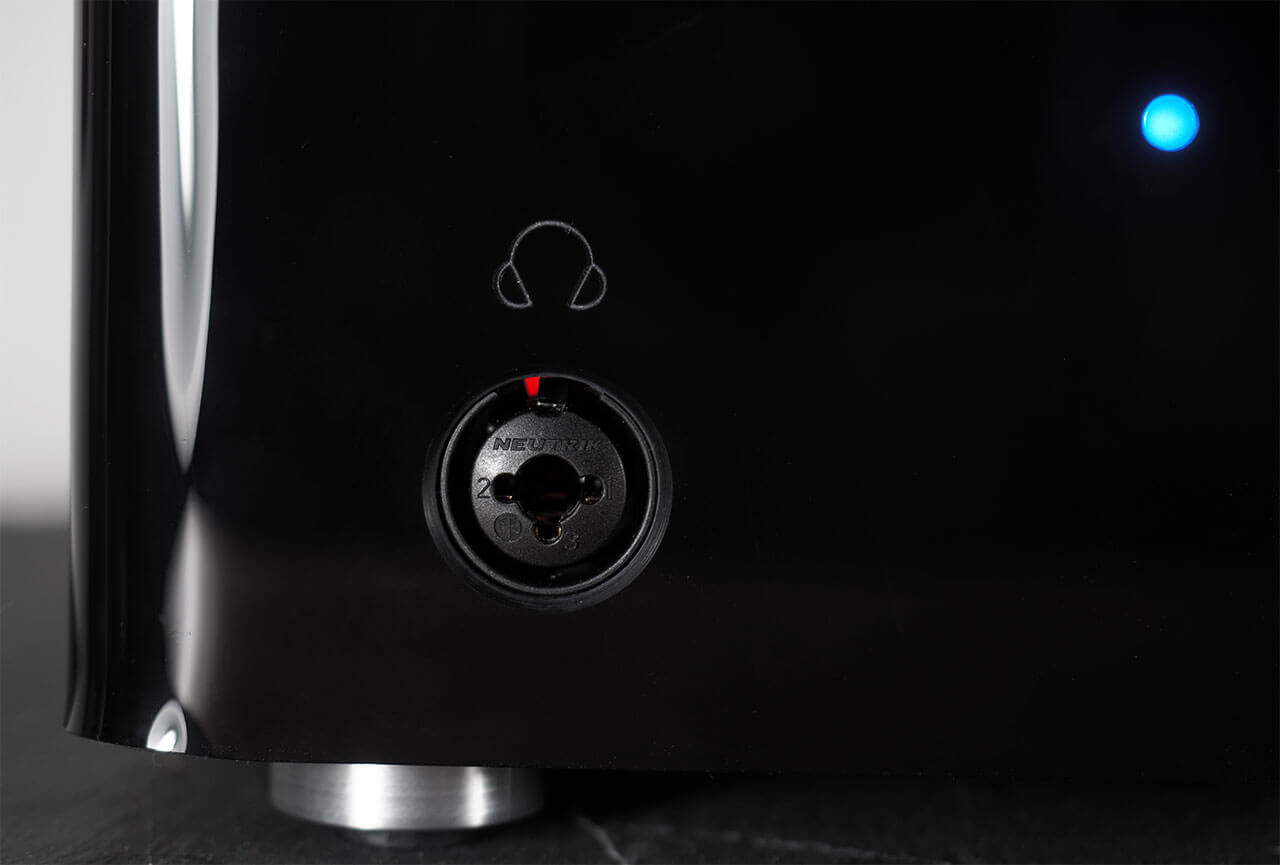
In comparison to the Burson Audio, the middle range appears to have a slightly better resolution. Stringed instruments also come across as very authentic on the Steinberg. Peter Ciluzzi ‘s acoustic performance was conjured up in my ears in an extremely sensitive way, which actually gave me goosebumps. In the live recording “Soliloquy” in particular, one notices a minimally emphasized playing style towards the bass range, which gives the guitar body a more mature-sounding presentation than is the case with the Burson Audio Soloist. However, the fundamental and the lower mids remain largely unaffected, so that the timbre does not drift off into the warm.
space talent!
Speaking of live recording: one discipline in which the Makroaudio Steinberg has so far trumped all of my desktop devices in the price range under 1,000 euros is spatiality. Thanks to the excellent localization of individual instruments, such as can be heard in the orchestra of Westside Story (The Original Sound Track Recording) , which was filmed in Hollywood in 1960 , you feel like you’re in a concert hall. In connection with the large stage, which is depicted three-dimensionally by Makroaudio Steinberg – violins on the left, clarinet in the middle, the double bass on the right side and the voices precisely located in the respective position – the amplifier built in Ravensburg advances to the top of its class for me.
Of course, because of the attention to detail of the macro audio in connection with high-resolution headphones, such as the Sennheiser HD800S (1,599 euros), the recording definitely shows its age. The amplifier-DAC combination does not try to “bend it up”. Superbly recorded albums can certainly benefit greatly from this accurate playback. The Burson Audio Soloist SL MK2 behaves a little more sweetly and forgiving in comparison, but can’t quite keep up with the macro audio in terms of stage presentation.
Level reserves & dynamics
Anyone who now thinks that the honest playing of the macro audio amplifier cannot be heard loud for a long time is wrong. The distortions , which are imperceptible up to the highest levels, and the excellent detail resolution over the entire frequency range, do not tire my ears at all, even after a few hours of system of a down . The electric guitars in “Old School Hollywood” from the album Mezmerize are drawn very cleanly even with the volume control turned up further and the lead singer Serj Tankian always remains perfectly understandable.
However, you should be careful not to turn the controller too far to the right, because the Steinberg is bursting with level reserves. Even at the +6dB setting, the Sennheiser HD650 headphones, which are not exactly known to be the most sensitive, reach very high volume levels. For a Hifiman HE-6 there should still be enough room for improvement due to the high amplification.

The Nuprime HPA-9 is even more rocking and dynamic than the macro audio, which has always been my favorite on rock and metal albums due to the flawlessly connected lower frequencies in connection with the present mid-range. The Makroaudio Steinberg does not quite reach the joy of playing the Nuprime, but it can definitely keep up.
The surprise: the bass
What the Makroaudio Steinberg also surprises me with is its behavior in the bass. In any case, I have never heard the way the German-made amplifier presented the album Coexist by the British electronic duo The xx . This statement can be taken positively by the reader. The bass guitar and the electronic beats, which were also focused on the bass, came to my ears with a force that sometimes not even my “bass reference” Nuprime HPA-9 can produce.
What is particularly striking is the abysmal sub-bass, which fully exhausts sound transducers reaching far down, such as an Audeze LCD-2 or the AKG K550, and almost creates a subwoofer feeling. Quantitatively, a little more force is applied here. However, since there is only an increase in the lower bass range that does not radiate into the mids, the bass in the macro audio does not thicken too much and the voices of Romy Madley Croft and Oliver Sim are consistently easy to understand. Compared to Makroaudio, the Burson Audio Soloist offers less level in the deep bass, but due to the somewhat reduced highs, it also lacks some joy in playing electronic music.
As far as the impulse behavior in the bass range is concerned, the Makroaudio Steinberg is a little behind the Nuprime HPA-9. Especially in the kick bass you can hear Eugen Gurskij’s headamp playing a little less dry. The electronic bass drum is drawn slightly more imprecisely, making the beats sound a little less contoured than on the Nuprime. In comparison to the DAC1 USB from Benchmark (999 euros) and the Burson Soloist SL Mk II, however, this can be considered quite appropriate for the price range.
Conclusion
With the Makroaudio Steinberg, Eugen Gurskij has created a more than respectable headphone amplifier. The integrated DAC and amplifier section harmonize perfectly with each other. The combination of sheer detail resolution in the highs and mids, paired with a powerful and deep bass appeals to acoustic lovers, jazz enthusiasts and listeners with a preference for electronic music. The amplifier can also handle rock well – but for a playback device that is primarily intended for this type of music, you are probably in better hands with other manufacturers.
The amplifier, which is suitable for a wide range of headphones, has very convincing level reserves. The hobbyhorse of the Makroaudio is clearly the excellent performance in the room representation, also across classes. Here it even outperforms much more expensive competitors.
The Makroaudio Steinberg is characterized by …
- a balanced, high-resolution playing style that exhausts the frequency ends up to the limit of hearing.
- a treble with superb detail reproduction. No drop in level is noticeable up to the super treble.
- equally detailed and natural-timbred mids. Very easy to understand voice reproduction. Acoustic instruments benefit from the excellent connection to the other frequency ranges. Electronically distorted stringed instruments also come into their own, although not as confidently as with the best-in-class solutions.
- a somewhat stronger bass tone, which with certain headphones also gives rise to a little subwoofer feeling due to the far reaching frequency range. The kick bass lacks a bit of tightness, but in relation to the price range it is still a high level.
- excellent spatiality. Both the three-dimensionality of the stage and the positioning accuracy are otherwise only known from high-end cars. The stage size remains within a realistic framework.
- a believable decay behavior, especially in the treble, which makes acoustic instruments in particular appear authentic.
- befitting coarse dynamics, although a little more is definitely possible in this league.
- very good fine dynamic properties with over-ears. An evenly acting volume control allows you to listen very quietly without loss of detail. Even in-ears can still be controlled well at the lowest gain setting.
- almost infinite level reserves. Even power-hungry magnetostats can be operated up to the pain limit without audible distortion.
- high-quality choice of materials, no expense was spared either with the robust housing or with the audiophile components inside.
Facts:
- Product: Makroaudio Steinberg
- Concept: headphone amplifier with DAC option
- Price: 995 euros (with DAC), 795 euros (without DAC)
- Dimensions and weight: 220 x 140 x 290 millimeters (WxHxD), 3.6 kilograms
- Analog interfaces: 1 x line input, 1 x pre-out (variable), 1 x 6.35 millimeter headphone output (jack)
- Digital interfaces (only with DAC option): 1x USB-B input, 1x optical (Toslink), 1x S/PDIF coaxial (Cinch); Supported sampling frequencies: Toslink and S/PDIF coaxial: up to 192 kHz PCM, USB up to 768 kHz PCM, DSD512 native
- Other: automatic input selection
- Guarantee: 2 years

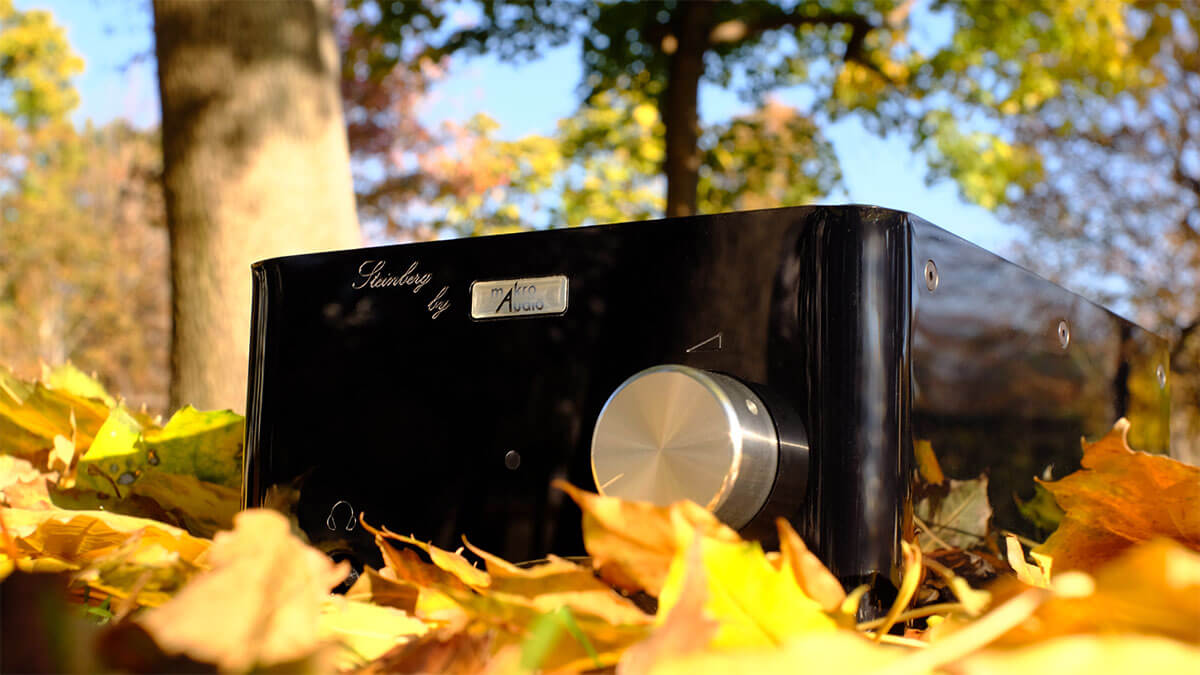
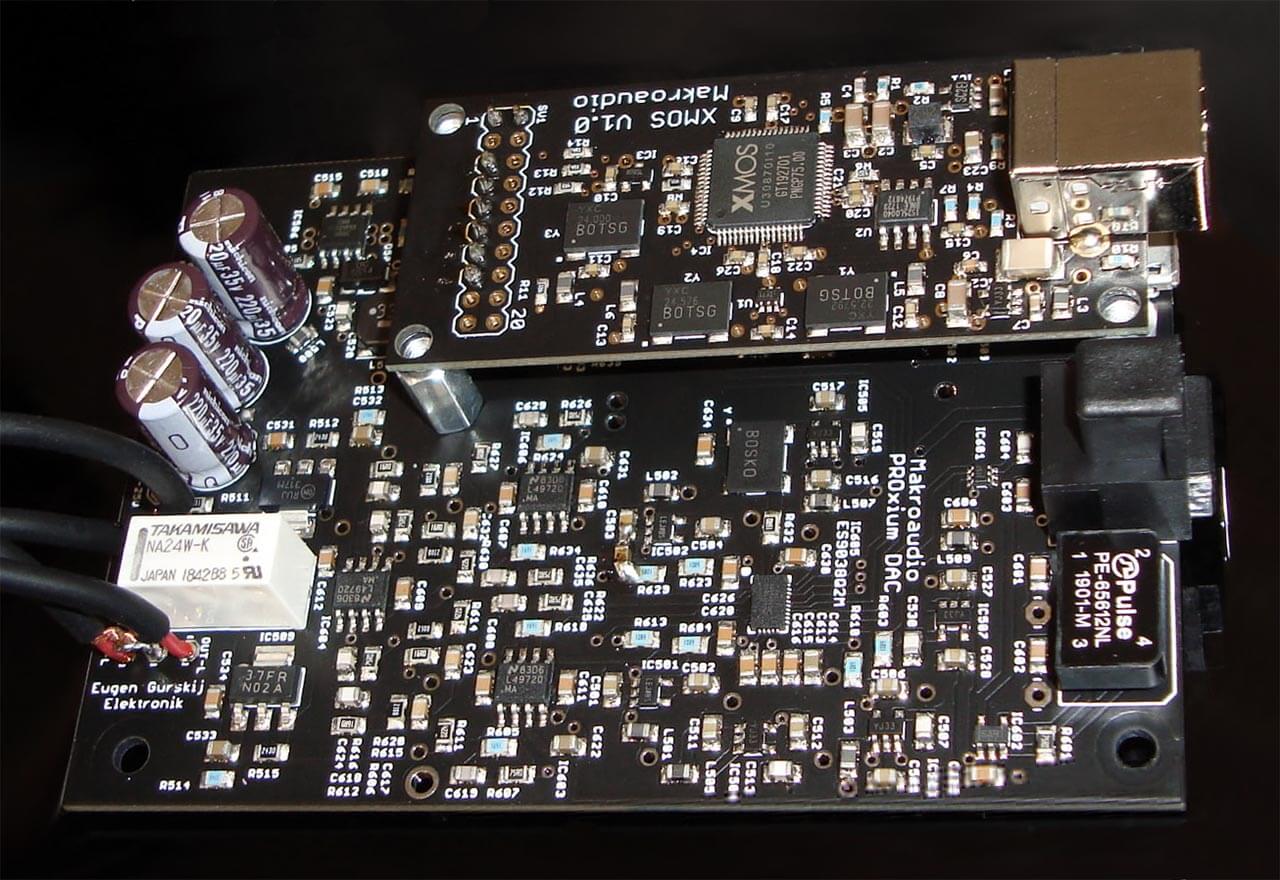


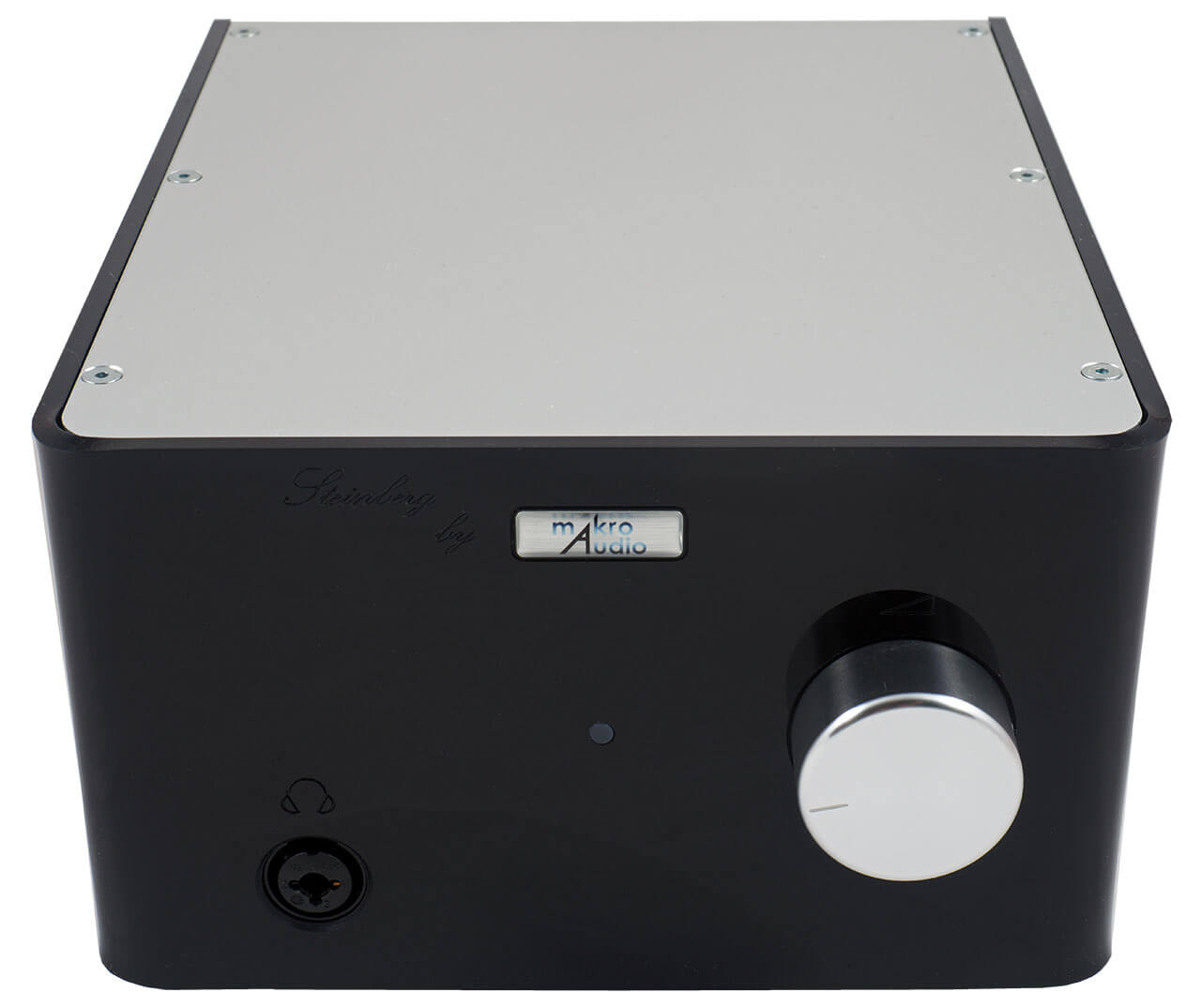

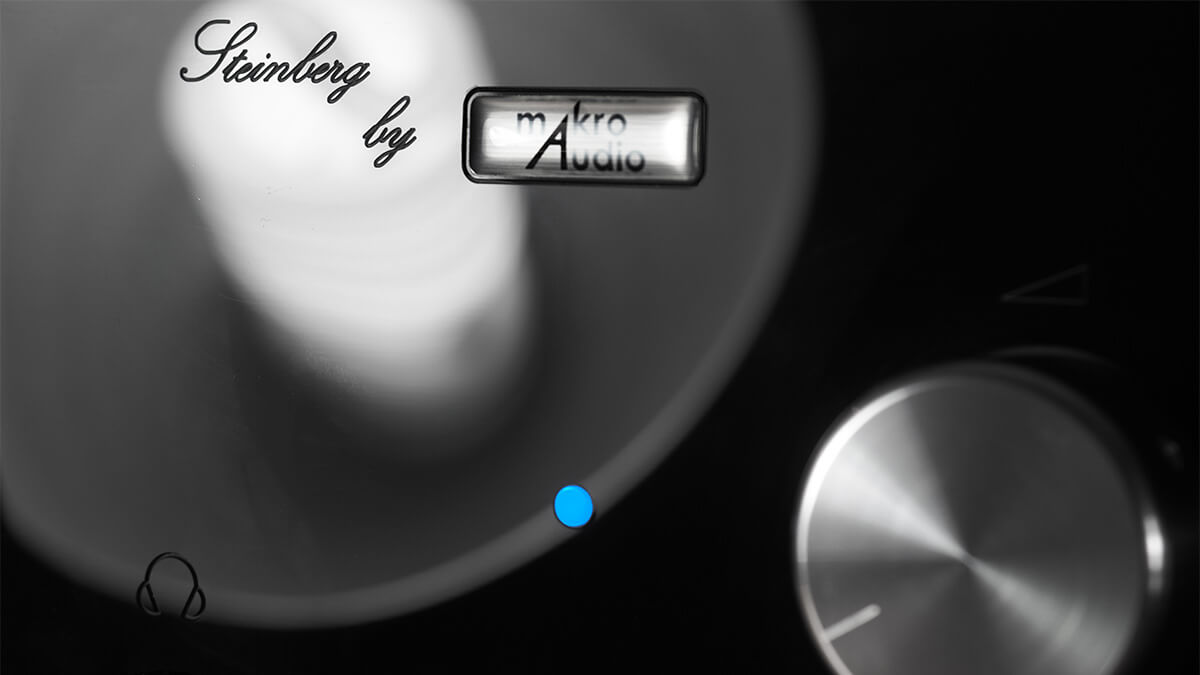



Add Comment